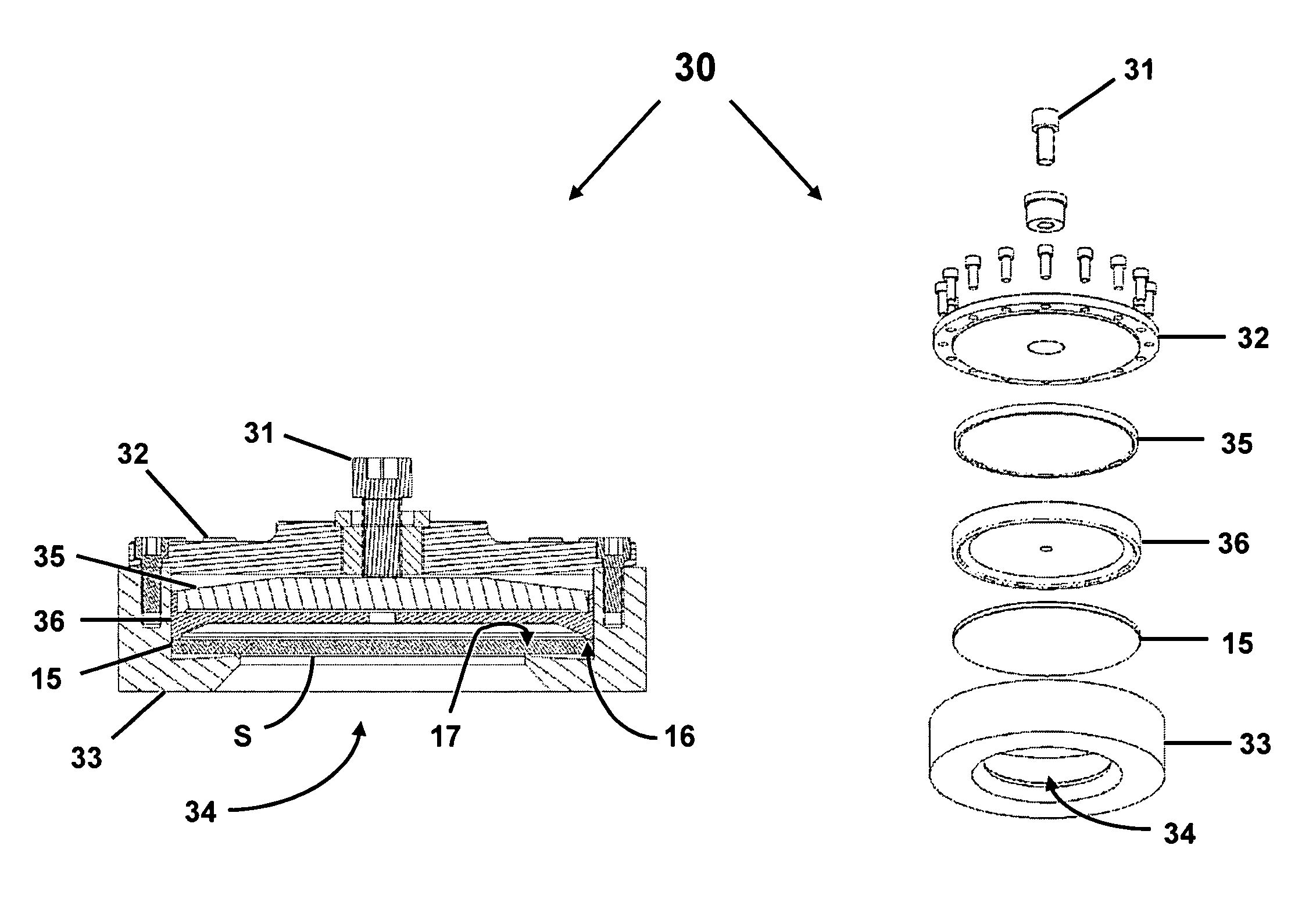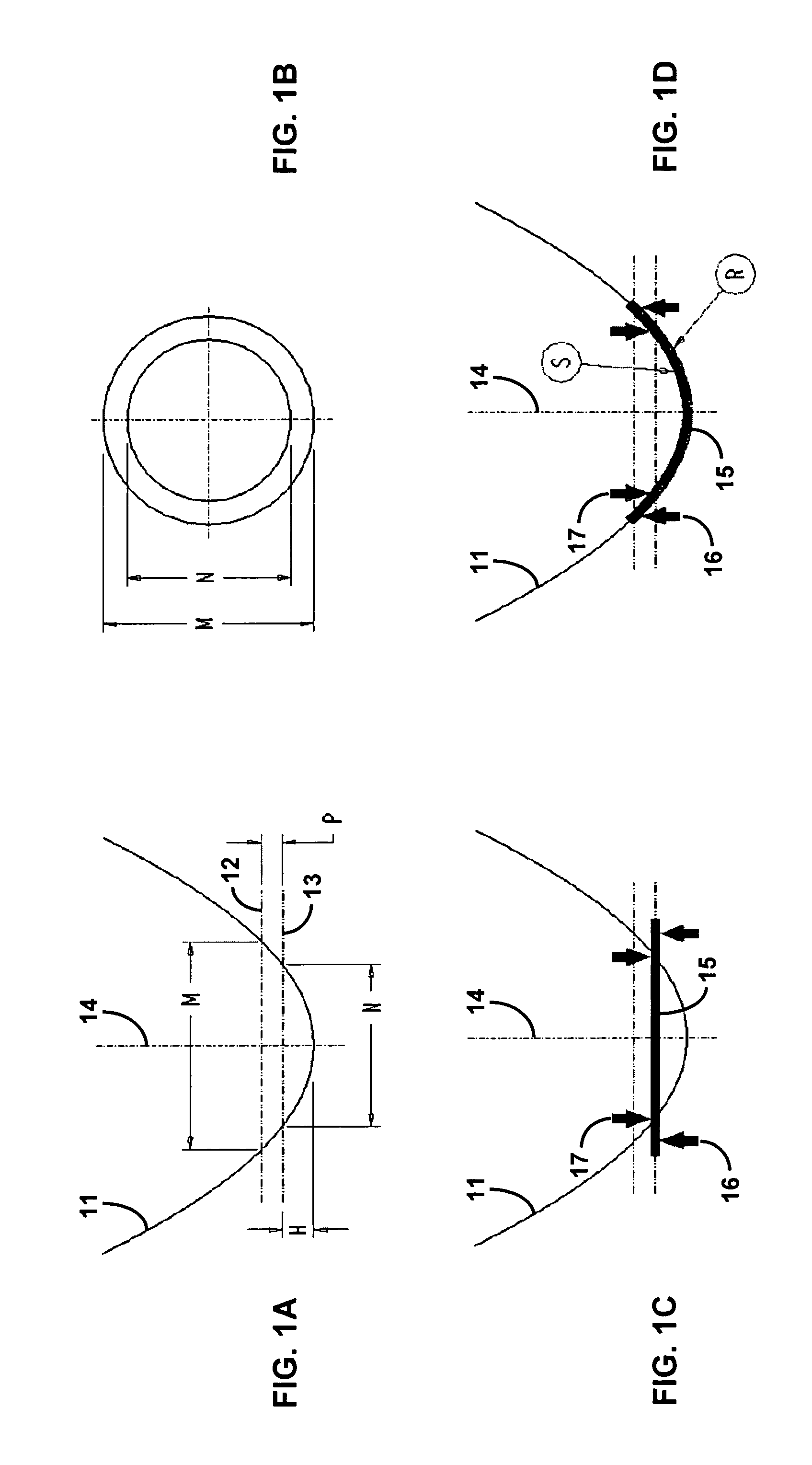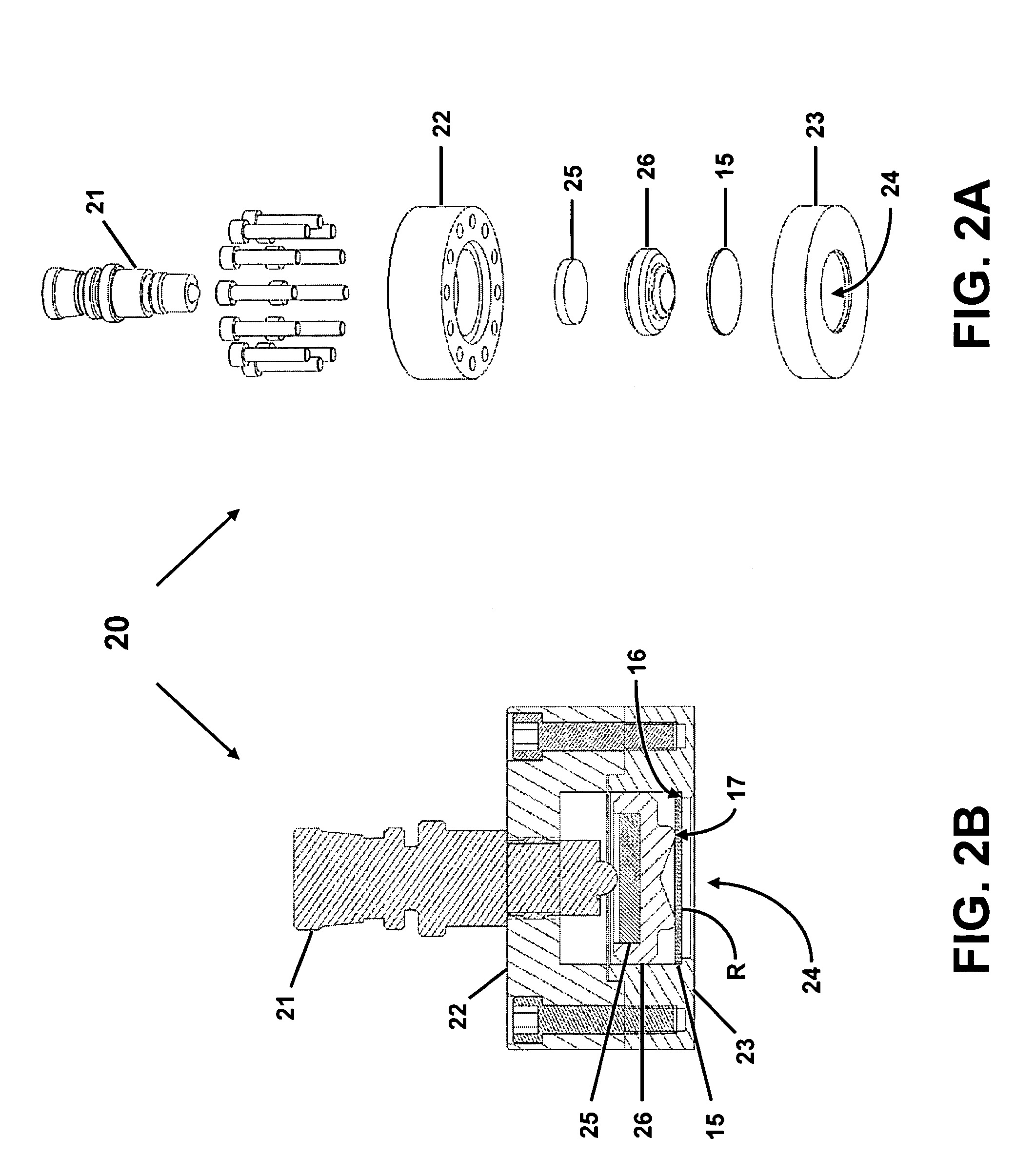Variable focal length deformable mirror
- Summary
- Abstract
- Description
- Claims
- Application Information
AI Technical Summary
Benefits of technology
Problems solved by technology
Method used
Image
Examples
Embodiment Construction
[0027]The present invention is directed to a variable focal length deformable mirror having a theoretically perfect parabolic reflective surface, and a method for forming the deformable mirror by deforming a planar mirror plate of uniform thickness. Such a truly parabolic shape ensures tight focusing, free of aberrations. The parabolic mirror shape is formed by placing the planar mirror plate between two circular or elliptical pushing rings, the geometry of which are defined by parallel paraboloid sections. The mirror plate is simply supported by the rings. Such a simple support supplies a displacement constraint, without imposing a rotation constraint or moment on the plate. A variable clamping force is applied to the rings, thus deforming the flat plate, and the focal length of the resulting parabolic surface is directly related to the pushing ring displacement. Using this simple geometric method, either concave or convex parabolic mirrors of arbitrary focal length and off-axis an...
PUM
 Login to View More
Login to View More Abstract
Description
Claims
Application Information
 Login to View More
Login to View More - Generate Ideas
- Intellectual Property
- Life Sciences
- Materials
- Tech Scout
- Unparalleled Data Quality
- Higher Quality Content
- 60% Fewer Hallucinations
Browse by: Latest US Patents, China's latest patents, Technical Efficacy Thesaurus, Application Domain, Technology Topic, Popular Technical Reports.
© 2025 PatSnap. All rights reserved.Legal|Privacy policy|Modern Slavery Act Transparency Statement|Sitemap|About US| Contact US: help@patsnap.com



